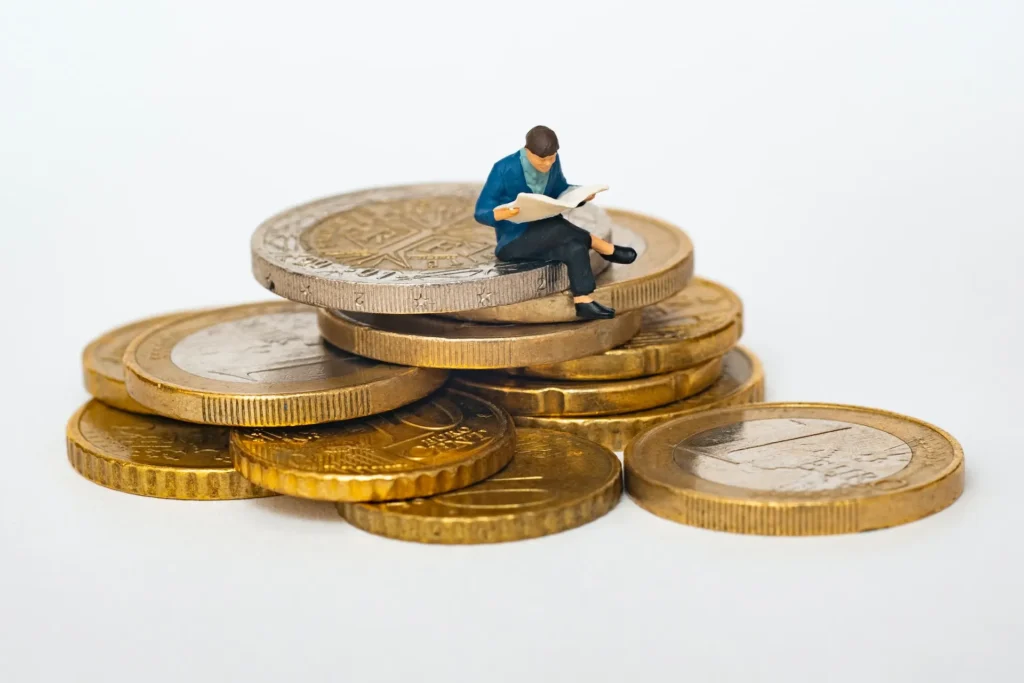Introduction

Non-fungible tokens, or NFTs, have emerged as a revolutionary concept in the digital world, creating a new frontier that combines art, technology, and investment. Unlike cryptocurrencies such as Bitcoin or Ethereum, which are fungible and can be exchanged on a like-for-like basis, NFTs are unique digital assets. They are stored on the blockchain, providing proof of ownership and authenticity that can’t be replicated.
The impact of NFTs on the art world has been particularly profound. Artists can now tokenize their work, creating a digital asset that can be bought, sold, and traded on various online platforms. This has opened up new avenues for artists to monetize their work and for investors to diversify their portfolios.
Read More: How to Invest in NFTs: The Authoritative Guide [2023]
The potential for high returns in the NFT market is exemplified by several notable success stories. Digital artist Beeple, for instance, sold an NFT collage of his art for a staggering $69 million. Jack Dorsey, who was the CEO of Twitter at the time, sold his first tweet as an NFT for $2.9 million. These examples highlight the lucrative potential of NFT investments and the growing interest in this digital asset class.
Why Invest in NFTs?

The NFT space is experiencing rapid growth, with an increasing number of artists, creators, and investors getting involved. This growth is not just in terms of the number of NFTs being created, but also in the value of these digital assets. Some NFTs that initially sold for a few hundred dollars have later been resold for hundreds of thousands, even millions, demonstrating the potential for great returns on investment.
Also read: Is NFT A Good Investment? -2023 (Explain in detail)
Investing in NFTs also presents an opportunity for portfolio diversification. Traditional investment portfolios may include a mix of stocks, bonds, and commodities. By adding NFTs to this mix, investors can potentially spread their risk and increase their chances of earning returns. As with any investment, it’s important to do thorough research and understand the risks involved.
Getting Started with NFTs

To start trading NFTs, there are a few basic requirements. First, you’ll need a crypto wallet. This is a digital wallet where you can store, send, and receive cryptocurrencies, which are often used to buy and sell NFTs.
Next, you’ll need an account on an NFT exchange. These are online platforms where you can browse, buy, sell, and trade NFTs. Some of the most popular NFT exchanges include OpenSea, Rarible, and Mintable.
It’s also important to understand the concept of “gas fees”. These are transaction fees that you need to pay when you perform actions like buying or selling NFTs on the Ethereum blockchain. Gas fees can vary widely depending on network congestion and they can significantly impact the cost of trading NFTs.
Investment Strategies

When it comes to investing in NFTs, there are two main strategies that investors typically consider: long-term holding and short-term selling.
- Long-term holding: This strategy involves buying NFTs with the intention of holding onto them for a long period of time. The idea is that the value of the NFTs will increase over time, leading to significant returns when they are eventually sold. This strategy can be beneficial for those who believe in the long-term potential of the NFT market and are willing to weather short-term market fluctuations.
- Short-term selling: This strategy, also known as flipping, involves buying NFTs and selling them in the short term to make a quick profit. This can be a risky strategy, as it relies on being able to accurately predict short-term market movements. However, it can also lead to quick profits if done correctly.
Your Complete Guide To 100x NFT Projects
It’s important for each investor to choose a strategy that aligns with their individual goals, risk tolerance, and investment horizon. This will help ensure that they are comfortable with their investment decisions and are more likely to achieve their financial goals.
Research and Due Diligence
Before investing in NFTs, it’s crucial to conduct thorough research and due diligence. This involves several key steps:
- Researching the Artist or Team: Understanding who is behind an NFT project can provide valuable insights into its potential. This could involve researching the artist’s background, previous work, and reputation in the art community. If the NFT is part of a larger project, it’s also important to research the team behind it, including their experience, track record, and credibility in the NFT space.
- Evaluating the Unique Perks of a Collection: Many NFTs come with unique perks or benefits, such as access to exclusive content, events, or communities. These perks can add value to the NFT and can be a key factor in its potential for future appreciation.
- Identifying Potential Scams and Pitfalls: Unfortunately, the NFT space is not immune to scams and fraudulent activity. This could include everything from counterfeit NFTs to pump-and-dump schemes. It’s important to be aware of these risks and to take steps to protect yourself, such as verifying the authenticity of an NFT before purchasing it and being wary of deals that seem too good to be true.
The Fun Aspect of NFT Investing
Investing in NFTs isn’t just about potential financial returns – it can also be a lot of fun! The NFT space is incredibly dynamic and innovative, with new projects and ideas constantly emerging. This provides plenty of opportunities to explore, learn, and experiment.
Whether you’re a fan of digital art, a gaming enthusiast, or just someone who enjoys being part of cutting-edge technology, there’s likely an aspect of NFT investing that you’ll find enjoyable. You might find yourself part of a vibrant online community, or get the chance to interact with artists and creators you admire.
However, while enjoying the process, it’s also important to remember the importance of risk management. Investing in NFTs, like any form of investment, comes with risks. It’s crucial to only invest what you can afford to lose, to diversify your investments, and to do thorough research before making any investment decisions.
Conclusion
As we’ve explored throughout this article, NFT investing offers a unique combination of art, technology, and finance. It’s an exciting space with significant potential for both financial returns and personal enjoyment.
However, like any investment, it’s not without its risks. The volatility of the NFT market, combined with the relative newness of the technology, means that informed decision-making is more important than ever. Doing your research, understanding the market, and making decisions that align with your personal goals and risk tolerance are key to successful NFT investing.
As the NFT space continues to evolve and mature, it will be fascinating to see how it develops and what new opportunities arise. Whether you’re an artist, a collector, an investor, or just someone with a curiosity about this new frontier, there’s no denying the potential and excitement of the world of NFTs.
